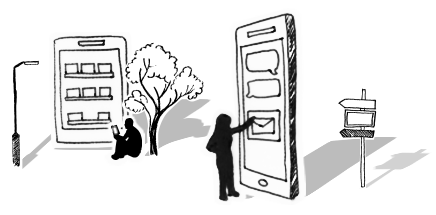




Heard of ADKAR?
Having an affinity with someone or something can mean you like and understand it, however in biochemistry a high affinity means the degree to which a substance tends to combine with another, for example: “the bacterial proteins bind to the molecules with a high affinity”.
Our consultants and experts have the experience and understanding of how to combine change management, learning needs and communications to create a formula which binds together to create a high affinity – generating incredible success stories.
When it comes to change management an integral part of understanding the evolution of change, is the communications a project or programme has with its stakeholders. At Afiniti our consultants are qualified and often follow the Prosci ADKAR (Awareness, Desire, Knowledge, Ability, Reinforcement) Model to truly gauge where the stakeholders are on their journey and, through assessment, how successful they will be at achieving change that sticks.
ADKAR is a change management tool which is the outcome-led method of limiting or managing resistance to change. Awareness, Desire, Knowledge, Ability and Reinforcement are the five stages at which people digest change. A change manager, or management team, will issue a survey or assess individuals to understand how to develop a change strategy and plan but also consider how they communicate with them.
Depending on where the individual is on the ADKAR Model, we can consider the kind of communications an individual or team require to get them to the next stage of their trip – while supporting the delivery of the change plan.
Initially people will become aware of incoming changes. They could be cultural, technological or organisation led change, and either planned or unexpected. Either way, the ADKAR model is relevant and informs both change and comms.
Why is ADKAR important?
ADKAR focusses on the individual. At Afiniti our values start with ‘People at the Heart’. Change might be technological, but it will impact individuals in several ways:
- Change of role
- Change of responsibility
- Emotionally (fatigue, stress, worry, concern)
- Change of processes or procedures
- Change of Team or team dynamic
These impacts will also be similar for cultural and organisational change, and by assessing people through ADKAR we can understand and see what support they require from their organisation.
This could be through better training, learning and development. It could be through better communications – being more transparent, giving them more access to leadership or building their confidence through workshops. Some people need to be reassured through more regular communications or having more face-to-face discussions.
Awareness
When we assess where people are with ‘Awareness’ we are looking at how aware they are of the change and its purpose. Are they aware of their role and responsibility, the projects objectives, the projects vision, mission and aims. We assess this on a scale of 1-5 (one being strongly disagree and 5 being strongly agree) if we are averaging below 3, we know we have work to do.
Working together, the change and communications team will identify areas that require support, and together they will develop a plan and strategy to ensure awareness increases among the team or organisation.
Depending on the answers given in the ADKAR survey or assessment there are several push and pull communication channels which can be utilised to support the increase:
- Change workshops
- Leadership Townhalls
- Focus Groups
- Announcements
- Websites
- Increase access to documentation
By the end of the project, we would expect to have a noteworthy increase in awareness, significantly more than when we start the change process.
Desire
We don’t just want people to be aware of our change objectives, we want them to be excited and engaged with the change. This is something we don’t expect to see much of in the initial stages of any project however we do expect to see an increase in desire as the project is driven forward.
Change will always initially be met with scepticism and fear of the unknown. This is where communications comes into its own. If we are given access to develop our communications, to increase knowledge and drive understanding, especially around benefits of change, then desire will follow.
Knowledge
“Knowledge is power”. People will feel more reassured, open to change and understanding of decisions once they have the knowledge and understanding of why it is happening and how it will impact them.
The word ‘impact’ often has a negative connotation, but it doesn’t always have to be negative. Change can impact people in a positive way, and through good communications and giving them the tools to understand, accept and recognise why it’s happening, you will be driving them forward and taking them on the change journey with you – not dragging them kicking and screaming.
Ability
Now people have awareness, desire and knowledge, they need to understand how they can increase their ability and skills to help accept the change and drive their own development. This can be tricky; some people might struggle more than others to accept new ways of working and this is where learning needs analysis, development of training programmes and an increase in communications. This will support them to reach the next stage on their journey.
Once again, working together, the change, learning and comms experts will ensure people are informed about why the learning needs assessment is happening, what training is required and the platform on which they will receive their new skills.
People learn differently kinaesthetically, through visual aids, listening and reading.
Reinforcement
Once the change has ‘gone live’ and people are “living the change’, they need to continue to drive it forward and accept the new way of working, culture or team. Change managers and communications experts will use this time to fully support the organisation. They could offer training refreshers, a period of hypercare, communication materials to support those who need more help, and they could give people access to subject matter experts to ensure they have somewhere to go when they need a helping hand. This will ensure the change sticks.
Not every project is the same; people react and accept change differently, and this is recognised in the ADKAR model. There is no one formula fits all, but there are key methods and support mechanisms that can be deployed to ensure a high affinity across all aspects of change, communications and learning.
If you’d like to find out more about how Afiniti helps clients plan, execute and embed sustainable change solutions, and how we can help you with your change programmes, send us a message and we’ll get straight back to you.
Written by Charlotte Westwell
To get the latest change tips, advice and guidance directly to your inbox, sign up to our monthly Business Change Digest.
